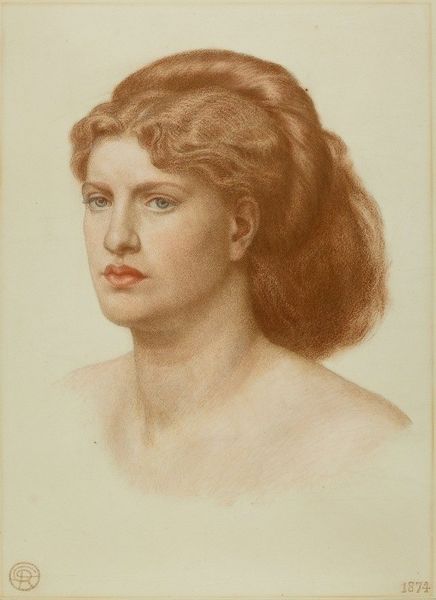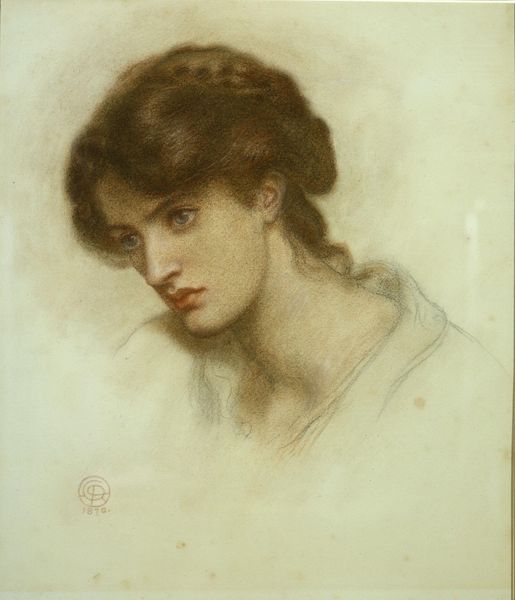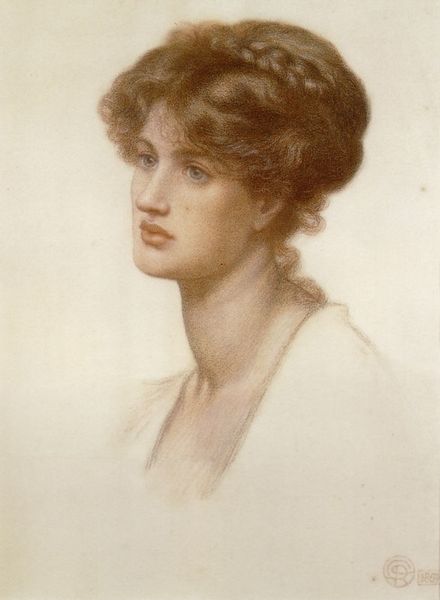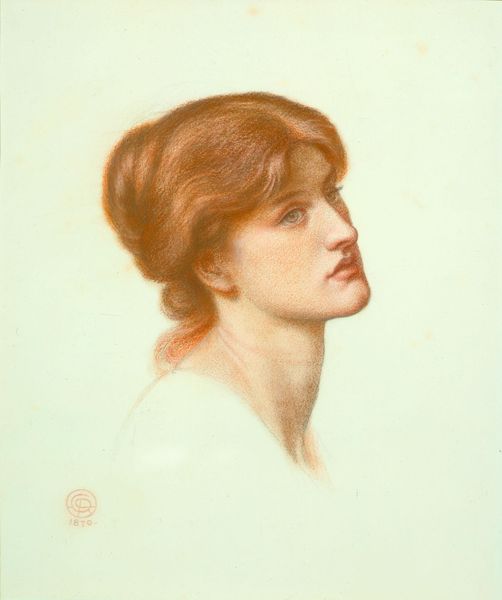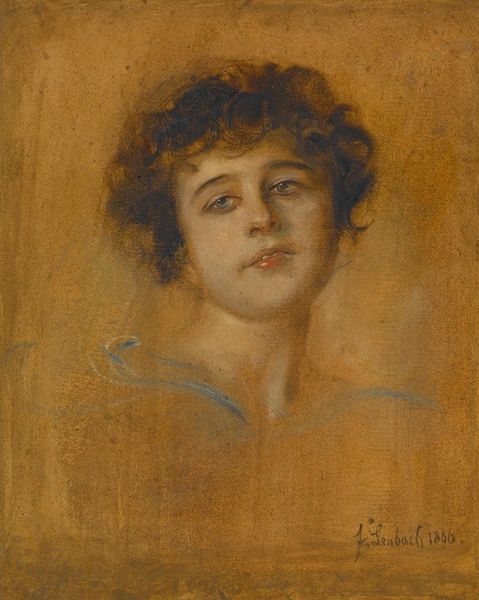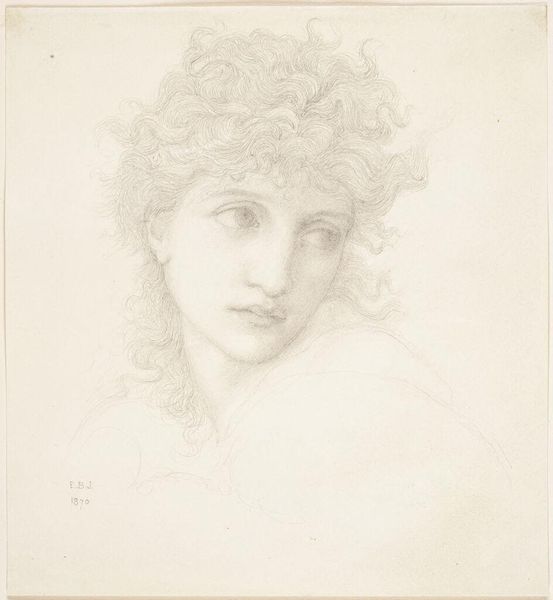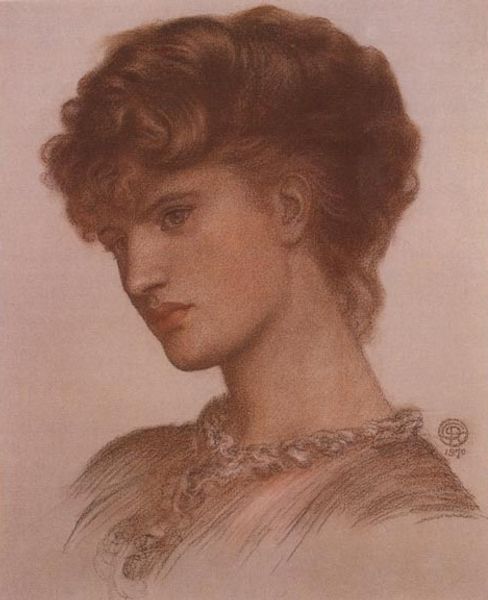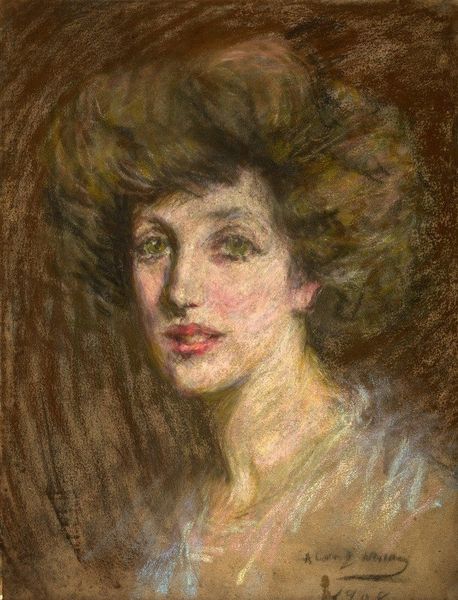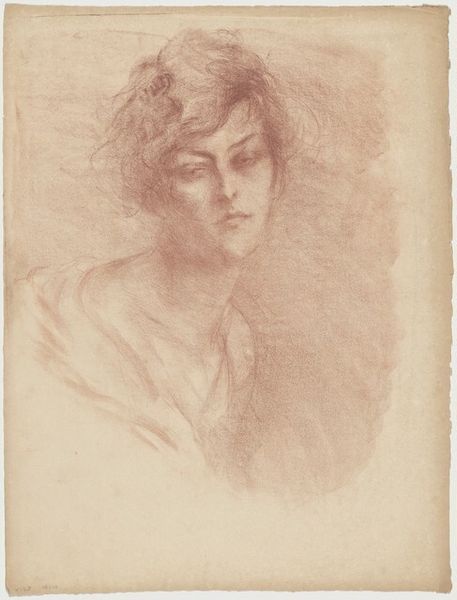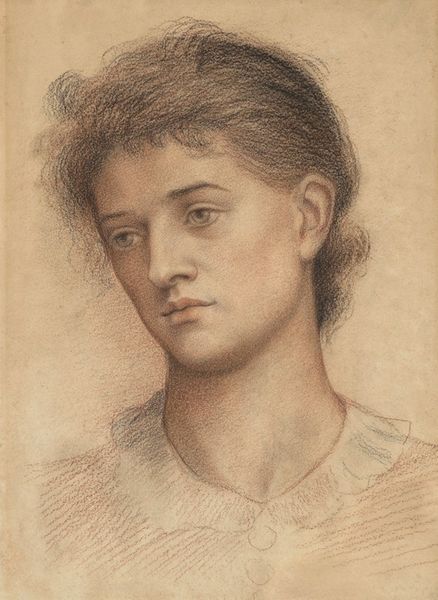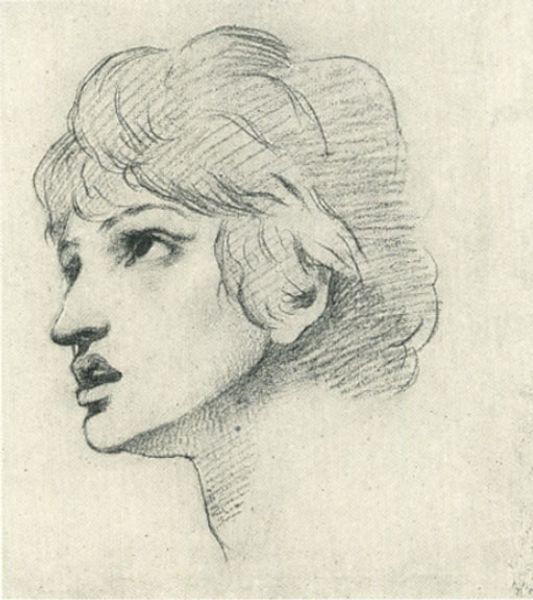
Copyright: Public Domain: Artvee
Curator: I find this drawing strangely compelling. There’s something about the woman’s downcast gaze that pulls me in. Editor: I can see that. For me, there's an air of melancholy around this piece. The coloring is soft, yet it seems like Rossetti struggles to let her gaze meet ours directly. Curator: This is Dante Gabriel Rossetti’s "Study of Alexa Wilding," created in 1873, and it's a pencil drawing. It reveals a lot about his creative process. Rossetti often returned to the same models. Editor: Exactly. Alexa Wilding became one of Rossetti's favored models. Her slightly melancholic look aligned with the Pre-Raphaelite obsession with idealized beauty, specifically a pale complexion and flowing auburn hair. Curator: Yes, the Pre-Raphaelites sought a return to a supposed purity of artistic form, before the High Renaissance. This portrait allows us to see the raw materiality of art production, the artist grappling with representation. We get an intimate glimpse of the model, as a product of artistic and economic considerations. Editor: And Rossetti, we must not forget, also carefully crafted an artistic persona, consciously defining himself in relation to his Pre-Raphaelite brethren. And the choice of model, as you said, was of course critical. Think about the power dynamics, Rossetti was defining, controlling Wilding's image through a specific male gaze and aesthetic criteria, further consolidating her place in his mythology. The image becomes less about her, and more about the Rossetti ideal. Curator: You’re right; labor, and artistic intention are visible here. Note also how Rossetti's focus on her face is so fine that her hair, for example, seems less focused on. It directs our attention precisely to the female visage as the locus of artistic interest. Editor: The Pre-Raphaelites fetishized women. Though they wished to return to supposedly simple, pure values in art and society, they were simultaneously steeped in contemporary gender conventions. What is revealed through such art, about this era? Rossetti, while being creative and revolutionary, did not manage to move past his inherent contemporary prejudice and expectations. Curator: Thanks. Thinking about this from a Materialist perspective allows us a glimpse into how women like Wilding were perceived and made into commodities and idealized versions. Editor: And by thinking through feminist theory we are enabled to have these interesting insights that expose Rossetti’s intent and societal expectations.
Comments
No comments
Be the first to comment and join the conversation on the ultimate creative platform.
